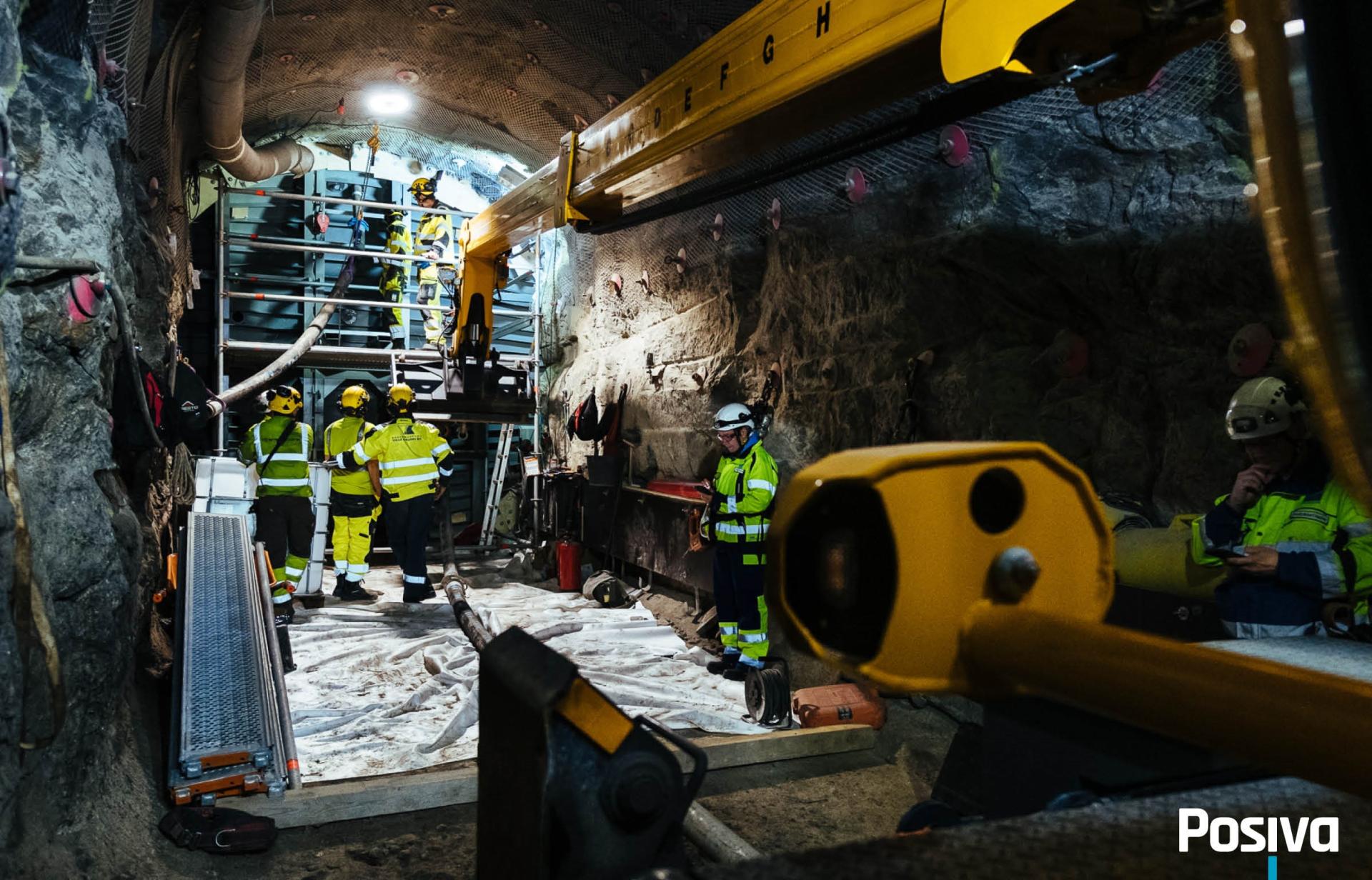Final disposal tests
The Full-Scale In-Situ System Test (FISST test) is the most comprehensive full-scale test to date. In 2019, two test canisters were installed in deposition holes in the ONKALO demonstration area in a tunnel about 50 m long. The tunnel, located at a depth of approximately 420 m, was filled with bentonite and closed with a steel-reinforced concrete plug in the same way as in actual final disposal.
The test canisters are equipped with heating elements simulating the decay heat power generated by spent fuel. Temperature changes and pressure of the canisters, deposition holes and surrounding bedrock and behaviour of tunnel backfill are monitored with approx. 500 sensors. The world’s first FISST test in connection with the repository will be monitored for years and will provide further information on whether the engineered release barriers are operating according to the initial assumptions.
The Full-Scale In-Situ System Test tests primarily the technical feasibility of final disposal, but it also produces research data on the effects of the initial final disposal phase. However, the FISST test can only monitor the repository for as long as the sensors operate, which is a short period of time in view of the final disposal time period of hundreds of thousands of years.
The FISST test was used to develop the preparedness for the integrated system test related to the commissioning phase of the disposal facility and furthermore for obtaining the operating licence and starting production later in the 2020s.
Upon completion of the facilities, a central tunnel of about 60 m long and a deposition tunnel of about 80 m long will be extracted into which four deposition hole will be drilled for the integrated system test. The tunnels of the integrated system test are shorter than in actual final disposal where the deposition tunnel can be up to 350 m long.

The Trial Run of Final Disposal is part of the commissioning of the disposal facility. The trial run consists of a full-scale final disposal test with the final equipment under actual conditions. The only difference to the actual situation is that the canisters do not contain spent fuel. The trial run is used to ensure that the work phases related to final disposal work as planned.
The Trial Run of Final Disposal is also monitored by authorities who will consider the processes of the integrated system test in view of the operating licence. The trial run can be used to demonstrate that the processes and procedures related to final disposal are in order.